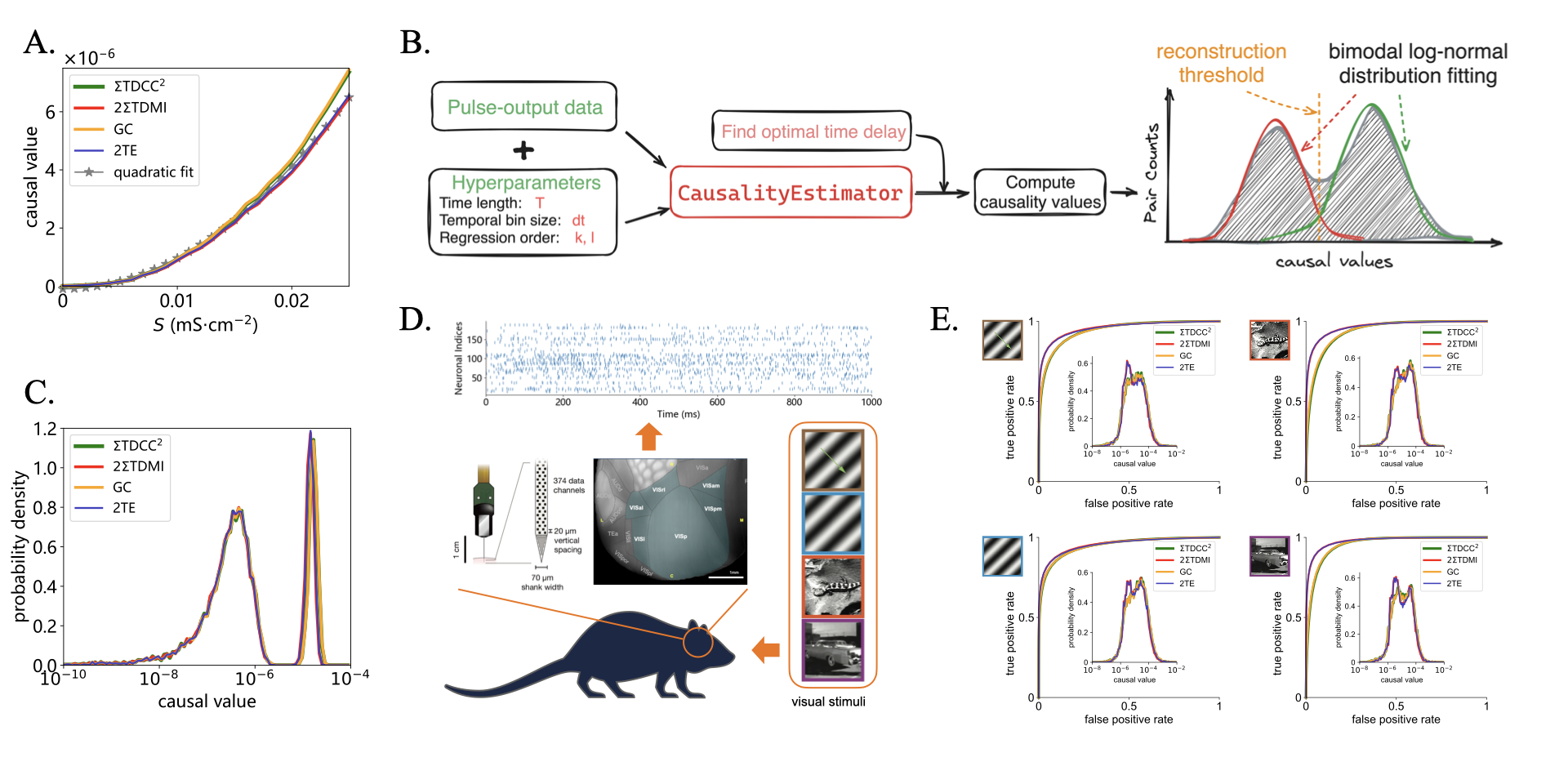Code for paper Causal connectivity measures for pulse-output network reconstruction: Analysis and applications.
-
Eigen: library of vector/matrix operation# Install on Ubuntu sudo apt-get update sudo apt-get install libeigen3-dev -
boost: containing library used for argparsers.# Install on Ubuntu sudo apt-get install libboost-all-dev
- network simulation: numpy, brian2
- network reconstruction: numpy, pandas matplotlib, scipy, sci-kit learn, seaborn,
make all -jconda create -n causal4 python=3.11 --file requirements.txt -c conda-forge
conda activate causal4
pip install -e .Install additional packages for running large E-I balanced network simulation:
pip install --upgrade "jax[cpu]"
pip install -U brainpy
pip install brainpylib
pip install -U "ray[default]"The spike-train data should be stored in a binary data file structured as the schematics above. You can create the data structure using numpy.ndarray and save it to a binary file using utility function: causal4.utils.save2bin. Check the example below:
import numpy as np
from causal4.utils import save2bin
# create spike data for demo
spike_times = np.array([0.1, 0.4, 0.8, 1, 1.4])
spike_ids = np.array([0, 1, 3, 2, 0])
spike_data = np.vstack([spike_times, spike_ids]).T
# now spike_data is a (5, 2) shaped array, where the first column is spike times and the second column is the corresponding neuron id.
# save the spike data to a binary file
filename = './test/data_example'
save2bin(filename+'_spike_train.dat', spike_data)
# note that the filename should not contain the extension '.dat', and the full filename must ended up with '_spike_train.dat'.import numpy as np
import seaborn as sns
from causal4.Causality import CausalityEstimator
from pathlib import Path
# Initialize the CausalityEstimator
estimator = CausalityEstimator(
path='./test/', spk_fname='data_example', N=100, T=1e7, n_thread=60)
# specify hyperparameters in the initialization, including T, dt and order parameter (k, l).
# Causality Estimation
# ====================
# Fetch the causality data as a pandas dataframe
data = estimator.fetch_data(new_run=True)
# new_run=True will run the causality estimation if the data is not available
data.head()
# Search of optimal delay parameter
optimal_m = estimator.get_optimal_delay(np.arange(10)*0.5)
# Plot distribution of TE values in log-scale
sns.histplot(np.log10(data['TE']), kde=True, bins=100)
# Reconstruction analysis
# ====================
from causal4.utils import match_features, reconstruction_analysis
from causal4.myplot import reconstruction_illustration
# align causality measures with ground truth and other neuronal properties, such as cell-types
data_matched = match_features(data, N=100, conn_file='./test/connect_matrix.dat')
# reconstruction analysis
data_recon, fig_data = reconstruction_analysis(data_matched, nbins=100)
# plot reconstruction distributions
fig = mplt.reconstruction_illustration(fig_data)-
Run simulation of HH10 and HH100 models:
./code4paper/run_HH10_scan_S.py ./code4paper/run_HH100.py
The results will be saved in
./HH/data/EE/N=10/and./HH/data/EE/N=100respectively. -
Figure 2:
./code4paper/pm_scan_kl_HH10.py
-
Figure 3:
./code4paper/pm_scan_kl_HH10.py
-
Figure 4:
./code4paper/HH100_recon_pnas.py
-
Figure 5:
To access allen data, you need to download the data using allensdk (or download directly from Allen Institute).
Install
allensdk:pip install allensdk
Then run the following scripts:
./code4paper/download_allen_observatory_data.py # download data ./code4paper/extract_allen_data_pkl.py # data preprocessing ./code4paper/allen_data_causality_estimation.py ./code4paper/test_allen.py

